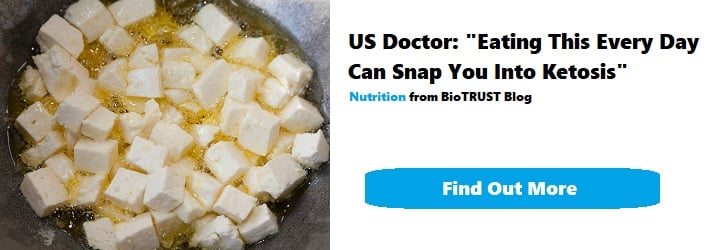How to Build a Foolproof Keto Workout Plan

You may be wondering if you have to follow a specific keto workout plan when you’re on a ketogenic diet. (In fact, we get this question a lot!) While you don’t technically have to exercise while on this type of diet if you don’t want to, the benefits of exercise are numerous, so it’s well worth it to follow an exercise program with any diet, especially if you want to take your health and fitness to the next level. And we encourage everyone to embark on an exercise routine. Yet it is true that there are special considerations when following a ketogenic diet.
What is a Keto Diet?
To brush up on what keto is… when following a ketogenic diet, your body burns ketones, rather than glucose (or blood sugar), for energy. This state is achieved by depriving your system of carbohydrates (which get turned into blood sugar and is how most folks derive their energy). The “problem” with this is that you first must burn through all the sugar in your system before you can tap into your fat stores. Enter, the keto diet.
Your body has different pathways to derive energy from, including:
- Glucose/glycogen
- Fatty acids
- Ketones
Usually, it can take anywhere from 16 to 20 hours to burn off the glycogen in your system and start tapping into the fat stores for energy. This can be accomplished via fasting overnight and skipping breakfast (for example) or by drastically reducing carb consumption for up to several days to reach a state of ketosis. It varies from individual to individual.
Why Does a Keto Diet Need a Different Workout Plan?
Before embarking on a ketogenic diet combined with an exercise program, it’s a great idea to take a look at exactly what you should and shouldn’t be doing if you want to make progress in the gym with your workout regimen.
Because our bodies normally use sugar (glucose) to power through activities, limiting that source of energy means you may need to operate differently, especially when you’re first starting a new diet. When there’s not enough sugar in your bloodstream to go around and power you through your normally intense workouts, it may limit the amount of exercise you can do and the intensity level you can sustain. This makes building a keto workout plan a unique challenge.
Research shows that probiotics can help support immune system function, boost cognitive function, and aids in weight managements and appetite control.
And new research suggests the ketogenic diet may work hand-in-hand with probiotics (which produce a special type of fat called butyrate) to suppress appetite and reduce food intake.
Also, because it’s so low-carb, keto can also help “clean house,” so to speak, in the gut, leading the way for healthy probiotics to populate and fortify the digestive tract. Win-win!
Our favorite probiotic is Pro-X10. It is formulated with Microencapsulation Technology, which wraps each of the probiotics in a special coating, protecting the beneficial bacteria both on the shelf and through the digestive tract. Ultimately, Microencapsulation Technology has been shown to deliver up to 5 TIMES more probiotics to the gut—where you need them most—than traditional uncoated probiotics.
Keto and Cardio—To Do or Not to Do
Should you include cardio or shouldn’t you on your keto workout plan? Well, that’s a great question, assuming cardio sessions are how you normally burn off extra body fat. Oddly enough, as it turns out, this may be a case of less is more.
What’s the problem with doing lots of cardio while you’re in a state of ketogenesis? Well, it turns out that less cardiovascular exercise may be more beneficial when it comes to fat-burning. The less cardio you do, the more likely you are to burn off body fat. I know you’re frowning in confusion right now, but it’s true. If you do a lot of cardio, while not fueling your body with carbs, you can start losing precious calorie-burning, metabolism-boosting muscle mass instead of the body fat loss you’re going for. Clearly, you don’t want that.
What to do? When doing cardio, drop the intensity and go for the long, slow burn instead. Add some of the following to your keto workout plan:
- Low-intensity aerobic exercise—remember, it’s important to stick to lower intensity activities like walking, maybe a slow jog, or some light dancing.
- Flexibility exercises—now’s a good time to kick in the stuff you usually skip at the gym. Go for some gentle stretching and some much-needed flexibility exercises.
- Core work—again, this is a great time to work on your core now that you’re keeping the intensity low.
- Stability training—it’s also a good time to ramp up your stability abilities.
So, if you’re not doing much in terms of cardio, then what should you be doing at the gym? Basically, you should stick to lower intensity workouts. Typically, you’ll notice a decrease in your performance at first, but over time, as you continue to live the low-carb lifestyle, you’ll start to regain your energy and intensity and build back up to the types of workouts you may have enjoyed in the past.
Your Keto Workout Plan
Working out while on a keto diet often boils down to mind over matter. Yes, your energy levels may dip for a bit, but once you work through that, just like you rode out the dreaded keto flu (though you can also dramatically minimize the side effects of starting a keto diet), you’re going to be good to go. And, interestingly, there’s not that much difference between a normal workout and a keto workout plan in terms of the exercises you can do. The real difference lies in the approach. You’ll be scaling back on the intensity and then building it back up over a number of weeks in order to burn maximal body fat and preserve the most muscle mass.
Cardio Plan—aim for 15 minutes of walking 3 days for the first week. Each week, add an additional 15 minutes of cardio.
- Week 1—start with 15 minutes of walking.
- Week 2—continue with your walking, but feel free to add some walk/run time to your cardio if you’re up for it. You can also extend your cardio workout to about 30 minutes.
- Week 3—you should now be fully acclimated to your new keto diet and keto workout plan. Try doing up to 45 minutes of low to moderate intensity cardio (50 – 70% of your maximum heart rate) as you see fit.
Try using cardiovascular activities like walking, jogging, swimming, biking, hiking, group fitness classes, and circuits.
Resistance Training Plan—Fortunately, adding resistance training to your keto workout plan may allow you to reduce body fat while maintaining, or even gaining, lean muscle. Yet again, your intensity levels will likely need to be scaled back at first and then increased as you progress. Your body doesn’t need to dip into glucose stores for short activities (ten seconds in length or shorter). This means, as long as you keep those sets short and sweet, you’ll have no problem getting in some heavier weight training.
- Week 1—aim for three weight workouts a week and start with a low number of repetitions and keep the weights heavy. Go for somewhere around five repetitions with a weight that challenges you. Use this setup for each of your exercises and body parts. Remember to do more, yet shorter sets.
- Week 2—stick with 3, or maybe 4, workouts per week, and increase your repetitions per set to 10. Test your strength and endurance to determine if you need to change the amount of weight you’re using.
- Week 3—if you’re using a cyclical ketogenic diet, then you can strategically place your workouts on your higher carb days for best muscle performance. Otherwise, over time, your body will adapt to burning fat for fuel, and you should be able to resume more normal lifting patterns.
Of note, it’s important to make sure you’re taking in the right amounts of fat and protein while exercising on the keto diet, so you don’t lose muscle mass and are able to burn mostly fat. It’s also a good idea to get the majority of your carbohydrates in around the time of your workout, for example, 30 minutes prior to your workout up to 30 minutes after. Remember, less is more.






